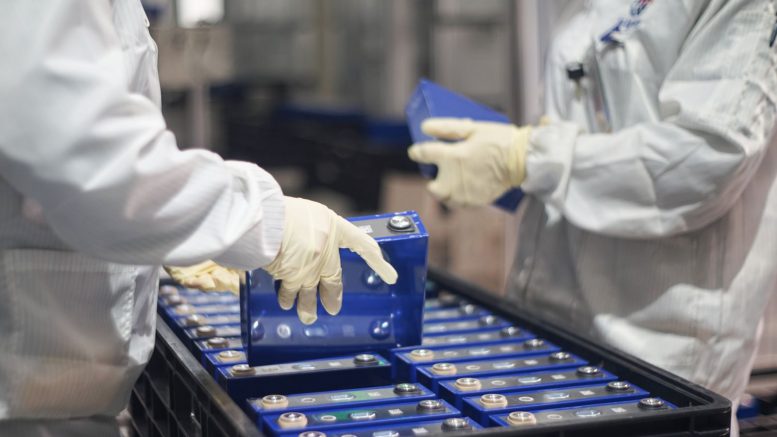China’s Ganfeng Lithium, one of the world’s largest producers of the battery metal, says it will delay spending on projects that don’t generate “significant near-term returns” after reporting a first-half loss of US$107 million.
Ganfeng joins a raft of cost-cutting lithium companies. This month, Arcadium Lithium (NYSE: ALTM; ASX LTM) said it’s pausing its Galaxy (formerly James Bay) project in Quebec to seek a cost-sharing partner while delaying another in Argentina to save a total of US$500 million over two years.
Last week, Chile’s SQM (NYSE: SQM), the world’s second-biggest lithium producer, reported a 63% decline in quarterly profit. It forecast low prices for the battery metal to persist for at least the rest of the year. Albemarle (NYSE: ALB), the largest lithium producer, has slashed costs and delayed projects among its brine and hard-rock operations.
“In spite of these cutbacks, most analysts expect the lithium market to remain subdued for the foreseeable future due to major stock overhangs and sluggish developed world electric vehicle sales,” BMO Capital Markets said in a note on Thursday.
The price of battery-grade lithium hydroxide has fallen to US$9,950 per tonne on Thursday from US$28,030 a year ago and around US$85,000 a tonne in late 2022, according to The Wall St. Journal.
The tumbling price is driven by a rapid expansion of supply from African spodumene and Chinese lepidolite projects, BMO said.
EV enthusiasm fades
Chrysler owner Stellantis said last week it was delaying plans to install an EV assembly line in a closed plant northwest of Chicago because of market conditions. That was even after Washington granted it US$335 million in July for the factory conversion.
Ford said it expected to incur a US$1.9-billion write down for cancelling an electric SUV and delaying a pickup EV. Already it’s lost US$44,000 on each EV it sold during the second quarter and anticipates losing US$5 billion on them this year.
Consumers may be weighing the cost comparison to fuel a mid-sized car with electricity versus gasoline. An EV takes from US$12.61 to US$16.11 of voltage per 160 km compared with US$10.71 in gasoline, according to Anderson Economic Group. It says the difference is more for pickups.
Still, sales in EVs increased 23% globally in the year’s first half if measured in battery capacity instead of units, according to Toronto-based EV supply chain research firm Adamas Intelligence. The cost of battery materials going into an average EV has fallen by more than half since last year, it says.
Large lithium projects
Several new mining project developers are plunging into this market to start production within the next several years and haven’t pulled back on their plans so far. E3 Lithium (TSXV: ETL; US-OTC: EEMMF) is advancing its US$2.5-billion Clearwater project on Canada’s largest resource of the battery metal.
Patriot Battery Metals (ASX: PMT; TSX: PMET) is targeting initial lithium production capacity of 400,000 tonnes of spodumene concentrate at its flagship Shaakichiuwaanaan project, formerly known as Corvette, in Quebec.
Lithium Americas (TSX: LAC; NYSE: LAC) has a US$2.2-billion from the United States Department of Energy and US$650 million in General Motors funding for its US$2.9-billion Thacker Pass project in Nevada. Major construction is expected to start by year’s end. Output is pegged at 40,000 tonnes a year of battery grade lithium carbonate in a first stage starting in 2027.
The rout has hit Ganfeng and other lithium producers hard, like three in Australia: Core Lithium’s (ASX: CXO) CEO quit after it halted operations at its Finniss project in January due to the low prices; Pilbara Minerals (ASX: PLS) slowed production and curtailed some of its planned expansions; and Mineral Resources (ASX: MIN) reduced its stripping ratio and scaled back exploration efforts to cut costs.
SQM’s forecast last week echoed, though wasn’t quite as pessimistic as, an outlook from Fitch in late June. The bond ratings company said lithium prices would remain below the peaks of 2022 and 2023 for at least five to 10 years.


Be the first to comment on "Ganfeng Lithium cuts spending as consumers ease off the pedal for EVs"